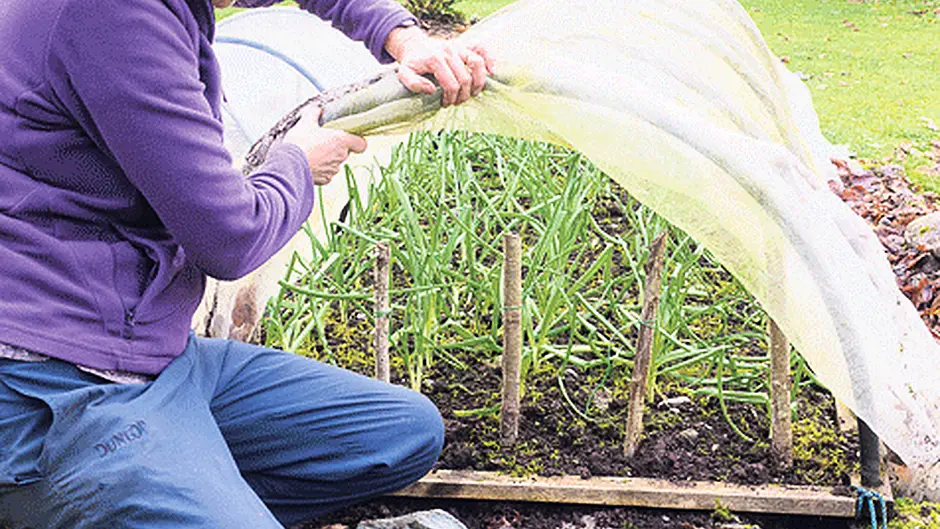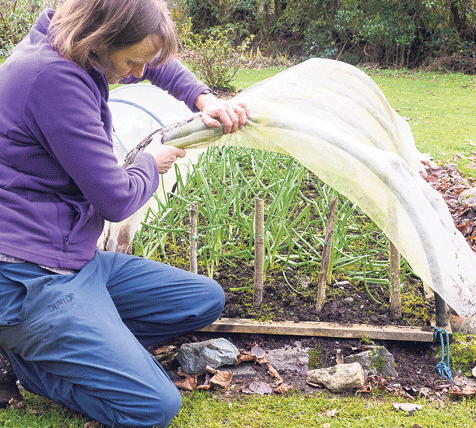Buds are bursting, early flowers are putting on a show and we've only just moved into February. Hold onto your hats! This month whizzes by and winter jumps firmly into spring before you know it.
Gardening with Joyce Russell
There are plenty of jobs to do and lovely bright days make you want to get out and do them. Think pruning, digging, washing pots, tidying the shed and servicing the mower. There’s polythene and glass to be washed down on greenhouses and tunnels and some of those old lengths of crop cover could be put through the washer. Start now and you won’t be caught out by the speedy passing of the shortest month.
A few flowers
I always get a thrill at the sight of the first snowdrops. The small white and green-veined flowers look delicate, but they stand through the coldest months of the year and look lovely. Snowdrops grow best from divided clumps. Do this after flowering is finished, but before the green leaves die back. They also like an alkaline soil so scatter a little lime when planting out new clumps.
Primulas give a much bolder performance and for those who like pinks, purples, oranges etc. this is the plant for you. Primulas grow well in window boxes and containers. If planting in the border, make sure to put out lots of plants for a bold display.
There’s still time to plant bare-root rose bushes, but you so often see plants that have been kept too warm and have grown long, pale shoots. Aim for tight buds and as healthy a plant as possible.
Autumn-sown sweet peas should have produced small, hardy plants at this stage. If sown in pots under cover, wait until March before planting outside. If sown direct outdoors, protect plants from slugs and snails; these beasts become active as temperatures rise.
Look out for spring planting bulbs and start to plan. Think what you want to put in containers and what will go direct in the ground. There’s a huge range available so stick with old favourites like lilies and scented gladioli, but also try a few new and exciting ones.
Sowing salad
This is a great time of year to sow salad leaves. It’s also a great time to harvest leaves that were sown in October last year. There’s plenty of variety available so buy a salad mix, or choose several different packets if you intend to keep sowing throughout the year.
Direct sowings made now in a polytunnel, or greenhouse, should crop within a few weeks: there’s time to sow, harvest and clear some crops before things like peppers, sweetcorn and aubergines need the space.
Autumn peas
Over-wintered plants will be quite tall at this stage and they will need some support to keep them up off the ground. Hazel sticks do a fine job, but you can also buy netting, or specially designed frames, to support the plants.
Keep the soil damp and watch out for any signs of grey mould on plants grown under cover.
Aubergines
Seed takes seven to 10 days to appear and seedlings need plenty of light so they don’t grow leggy. Pot seedlings on into individual 8cm pots and keep them covered until the first real leaves are growing strongly.
Small plants can grow well on a sunny window ledge, but keep an eye out for greenfly: these can invade from nearby houseplants.
Onions and Garlic
Autumn-planted sets and cloves should be growing well at this point. They will benefit from a bit of extra feed to get them moving. Both onions and garlic like potash, so buy an organic feed that is rich in this. Powdered seaweed or woodash are also good options. Scatter the feed between rows and wait for rain to wash it in. Clear any weeds before applying feeds.
I keep my onion and garlic beds covered for a few more weeks. Coverings should always be removed if plants need more space.
Onion sets are available in shops now for spring planting. Look out for firm large, good quality sets: these have a head start over tiny, soft ones
Pruning fruit trees
February is my preferred month for pruning fruit trees. It won’t be long until sap starts moving and buds burst. February pruning tends to lead to fewer disease problems through the cuts and less die back. The provisos here are: not to prune in frosty weather; to make as clean a cut as possible; and to leave a healthy bud to grow on just below each cut.
Another reason to prune in February is that enthusiasm for the garden is on its way up. Pruning can be a fiddly, strenuous and time-consuming job. It’s one I prefer not to tackle when garden fever is at its lowest ebb in the darkest months.







